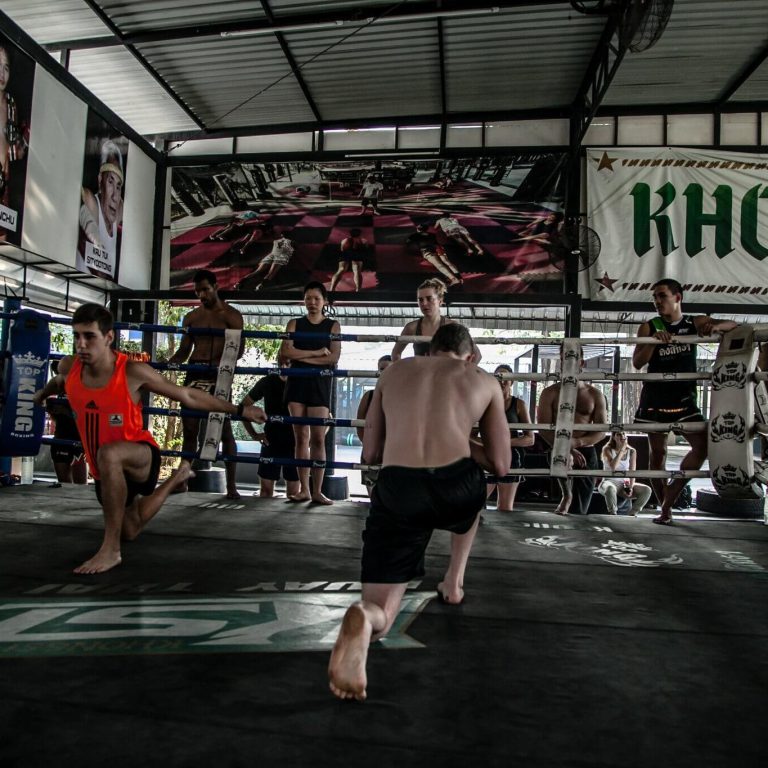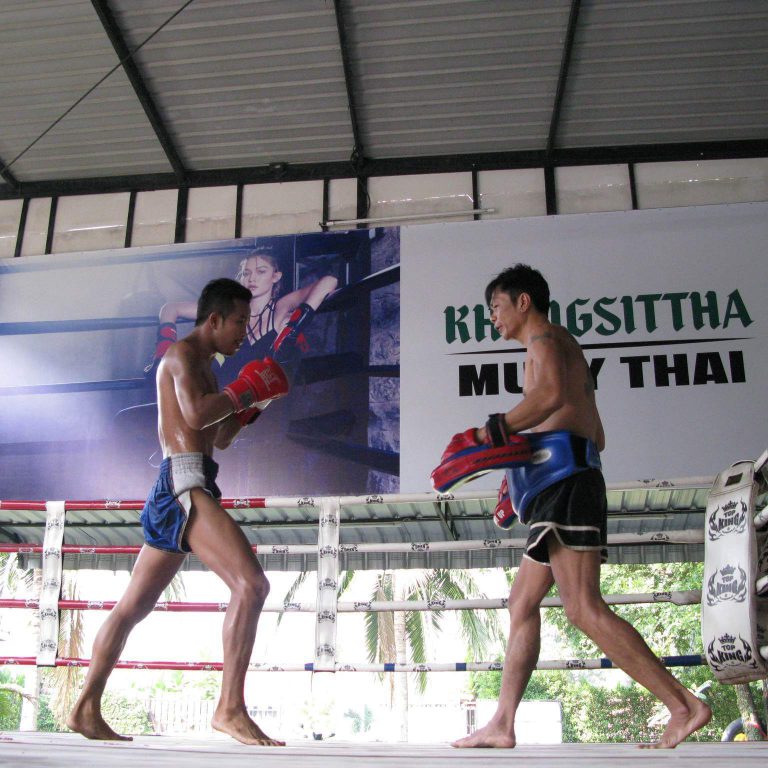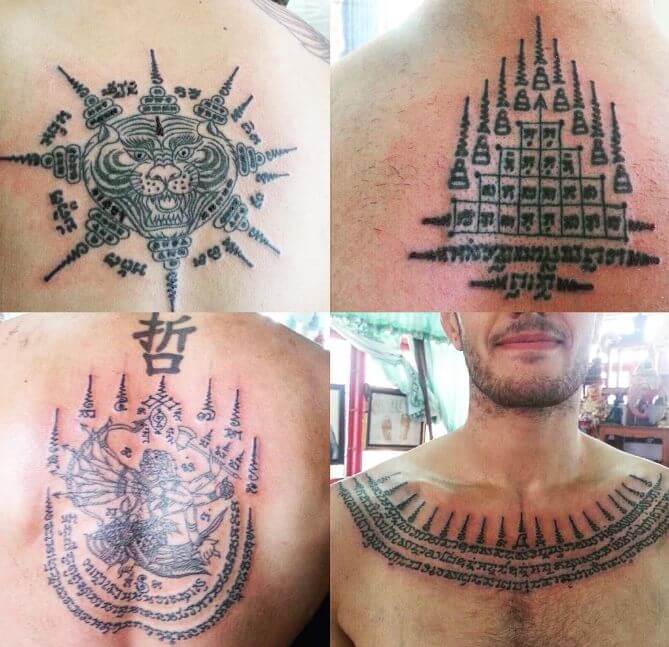
Tattoos have always been a part of various cultures to record memorable moments, pains, successes, and loved ones. There is no exception in Thailand, and many Buddhist monks have employed the “Sak Yant” tattoo method for religious purposes. Masters and apprentices have been passing on the traditional method of thai tattoos for years, and it remains a huge part of Muay Thai, Thailand’s national sport.
Sak Yant tattoos are created for many reasons, the primary ones being religious and protective. Within Muay Thai, it is said that these tattoos imbue their owners with superhuman strength, the ability to become quicker, and to protect them from evil spirits. Outside of Muay Thai, sak yant would protect Mahouts from being attacked by their elephants, and even had the powerful ability to stop bullets from entering soldiers during battle. Protective indeed, there is a ton of meaning behind these tattoos other than beautiful symmetry, and it’s important to recognize the significance of getting a sak yant in Thai culture.
The Ritual Behind Sak Yant
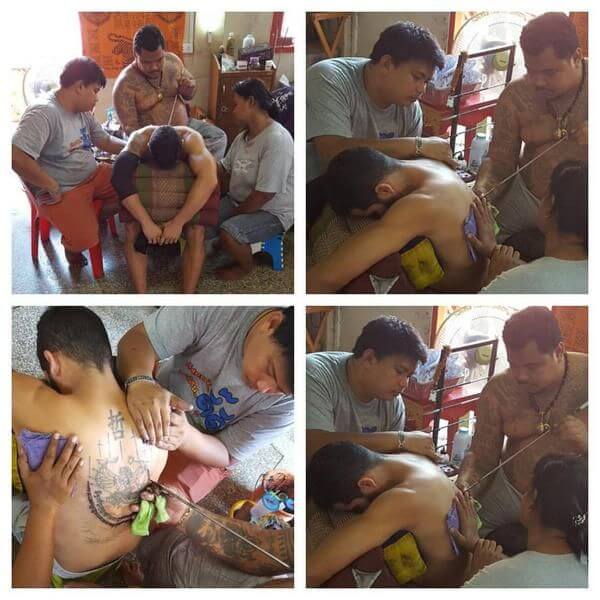
The meaning of Sak Yant is simple; “Sak” means tattoo and “Yant” means magical symbol. In order to receive the blessings that typically power the tattoos, you will have to receive it from an Ajarn, or teacher in the art. The picture below is an example of an experienced Ajarn.
The Ajarn will determine what design needs to be placed on your skin, and he will also determine where on your body it should be placed. There are exceptions to this case, but traditional Sak Yant gives these choices strictly to the person transferring magical power into a recipient’s body.
When beginning the tattoo, an Ajarn will read your soul, determining what should be put onto your skin next. Sometimes he will ask questions, and sometimes this process could take up to an hour of observation before an Ajarn will figure out the best Sak Yant for you. It is believed that the soul resides within the head, and tattoos will have more power the closer they are to the crown of your head.
After the image and location have been determined, the Ajarn will begin his work. Normally he will have an apprentice helping him throughout the process, but there are cases where an Ajarn will do his work alone. Everyone knows that tattoos can be painful, and the traditional Thai method is no exception. The Ajarn will take a large bamboo or metal rod, dip it into ink, and begin taking quick, calculated stabs to the recipient’s skin. The mind of both the Ajarn and the person receiving the tattoo must be calm in order for the tattoo to look well.
The Ink Recipe
What many people don’t know about traditional thai tattoos is that there are additional ingredients put into the ink in order for it to have its magical properties. Studies show that different recipes hold different ingredients, and can range from charcoal, herbs, and even snake venom. According to Tattoo anthropologist Lars Krutak has seen Ajarns use everything from sandalwood steeped in herbs, to oil extracted from wild animals “such as elephants, galls of tiger, bear, and python, and even cobra venom or the chin fat from a corpse.” These ingredients, he writes, heighten the tattoo’s protective qualities.
The Magic
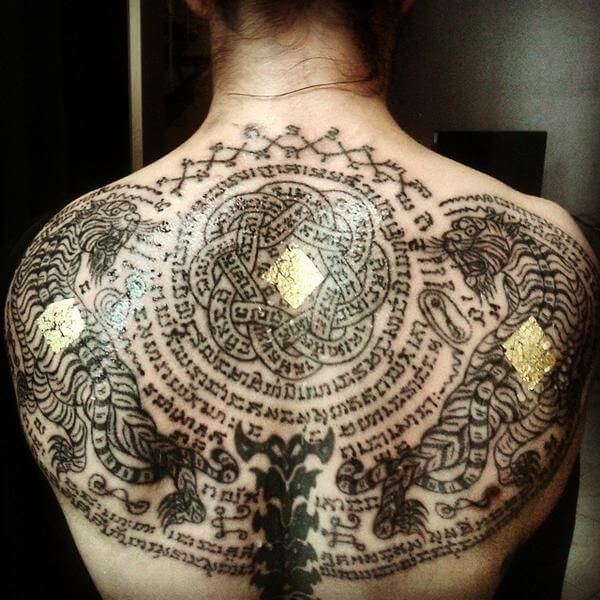
After the design is finished, the ajarn performs a chanted sutra then blows the prayer into the skin to activate the tattoo’s powers. This is said to create a powerful force, bringing down the energy of the ajarn, his teachers, and the teachings of Buddha into the body.
Legend has it that Thailand has never been occupied by a foreign country thanks to Thai army “ghost soldiers” who were invisible to the eyes of invaders, thanks to the powers of their sak yant tattoos.
“The sak yant tradition is not simply animism and Buddhism practiced side by side, but rather an integrated system of magic in which neither can exist without the other.” – Joe Cummings, author of Sacred Tattoos of Thailand.
What are the Dangers?
If you’re planning on coming to train Muay Thai in Thailand, and decide you would like to get a Sak Yant, keep in mind the dangers associated with this type of tattoo. It can be considered insulting to get a fake Sak Yant by a novice, or normal tattoo artist. The ink and the person doing the tattoo will not be able to bless your Sak Yant and it will be powerless. Misrepresentation of these symbols has landed some people in jail, leading the Thai cultural minister to threaten banning tourists from getting religious tattoos altogether.
There is also a series of rules that you must obey if you wish to keep the power of the tattoo inside your body. “the tradition is also deeply entwined in the Buddhist moral code that the designs can lose their powers if a wearer errs from their spiritual path,” says Cummings. Not all of the rules apply to everyone, but some of the rules consist of not killing anyone, not eating certain foods, don’t steal from anyone, do not indulge in alcohol or drugs, and sexual intercourse that isn’t considered proper. The more dharma (good behavior) a person is able to uphold, the greater the strength of their tattoo.
The following pictures are examples of the various types of tattoos that you will see on Muay Thai fighters, and the link below goes into detail about the various symbols and what they represent.



